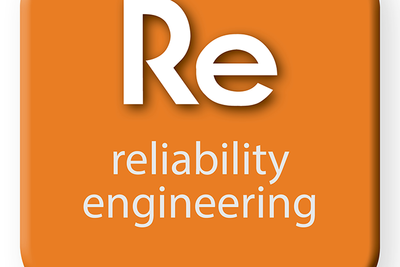What is failure forecasting?
Failure forecasting is a projection of failures into the future based on assumed or documented failure details. It is also known as risk analysis of future failures. For a constant failure mode system this is very straight forward. However for complicated failure modes where the failure rate increases with time (wear out failure modes) or where failure rates decrease with time (infant mortality failure modes) this becomes a more complicated analysis as described by the Abernethy Risk which is described in The New Weibull Handbook and implemented in the software package WinSMITH Weibull for predicting future failures. Like wise, reliability block diagrams are useful for predicting future failures when the authentic failure details are supplied to the Monte Carlo models.
Please note manufacturers follow two general strategies for their equipment:
1) build the equipment to avoid failures even though this increases the original capital costs, or
2) build equipment and see the original equipment at a low cost (or even a break-even costs) expecting to make profits with the sale of replacement parts.
Thus for end users of the procured equipment, it is important to know the forecasted failures in the face of suppler protest that "our equipment never fails"-in that case ask to see the sale of spare parts for similar equipment and an estimate of the number of units working to get a crude estimate of the strategy employed by the equipment supplier.
A failure is an event which renders equipment as non-useful for the intended or specified purpose during a designated time interval. The failure can be sudden, partial, or one-shot, intermittent, gradual, complete, or catastrophic. The degree of failure can be degradation or gradual, sudden, or one-shot, from weakness, from imperfections, from misuse, or so forth.
A failure mechanism includes a variety of physical processes which results in failure from chemical, electrical, thermal, or other insults.
Why use failure forecasting?
: Future failures costs money and frequently increase the risk for safety or environmental problems. For manufacturers, the forecasted failures predict impending high costs for warranty expenses which can make/break a company. With good failure forecast, you can anticipate expected failures now (after x-usage), future failures when failed units are not replaced, and future failures when failed units are replaced either with the same failure modes or with differently designed components with different failure details.
When to use failure forecasting?
: This analysis is wisely performed in during the design of the equipment, however many surprises arise from different failure modes build into the assembled product or incurred by not anticipated usage in operations.
Where to usde failure forecasting?
: Generally this analysis is made during the up-front design effort-with much disbelief the products could be "this bad". Follow-up analysis occurs when unexpected failure modes arise during operation of the equipment which causes loss of service of the equipment and high costs for the end users.
These definitions are written by H. Paul Barringer
- Reliabilityweb Failure Forecast ›
- Reliabilityweb Get Ready for Forecasting! The 7 Steps for Success ... ›
